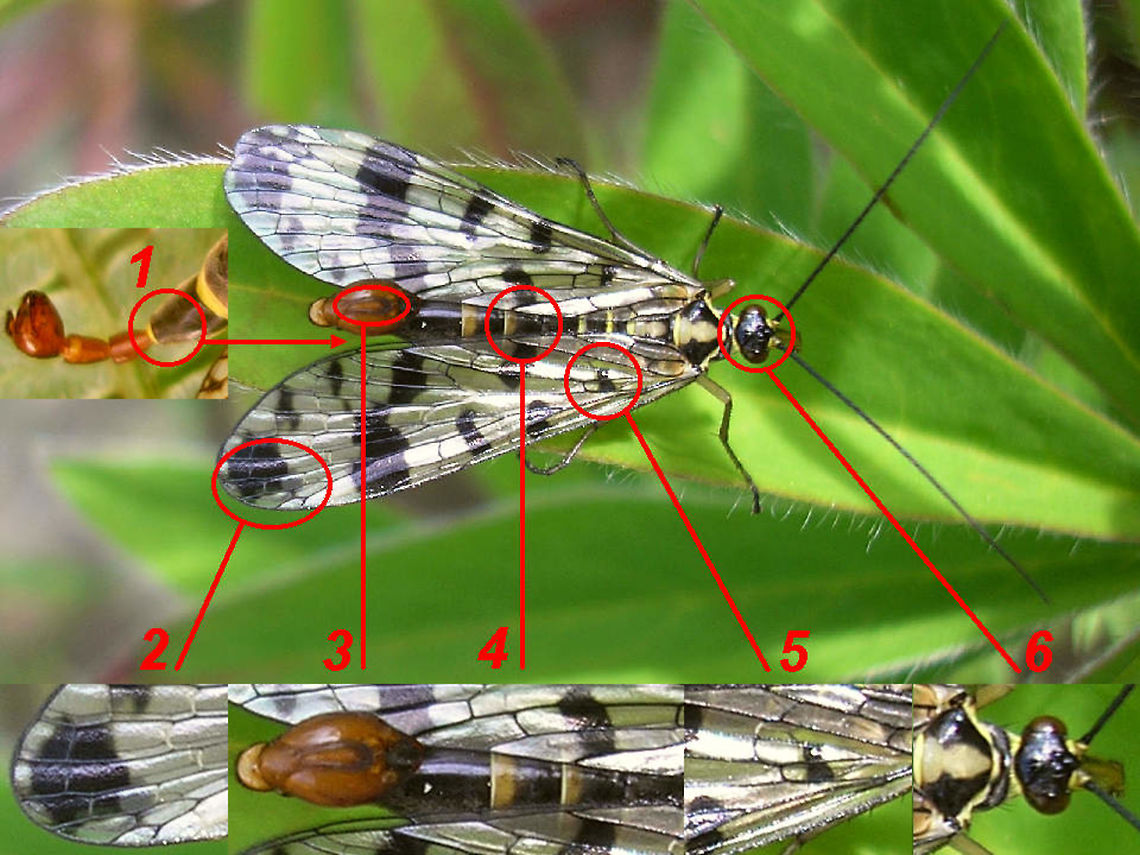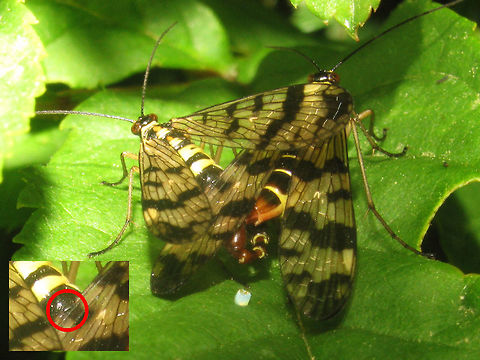
Panorpa - details to photograph for ID
Some details that can be helpful in identification of European Panorpa (try to get these on your photos)
1) Lateral shot of last abdominal segments in males: Cylindrical on most species, carrying a "spoiler" on the species of the cognata-group.
2) Some keys/diagnosis will do counts of veins in the tip of the wing
3) If you have a male _always_ try to get a good shot of the calipers and the hypovalves on them
4) Males have a "notal organ" dorsally on the hind margin of the 3rd abdominal segment, in some species this is enlarged and therefor diagnostic
5) Spot patterns on the wing can be diagnostic, especially for females where we have little other characters to go on. Notably the basal spot indicated here (5) is an important help in separating the sibling species P.communis and P.vulgaris
6) The colour of the head can be helpful, especially in recognizing Panorpa cognata with a clear red cranium

Panorpa vulgaris is a very common species of Scorpionfly in Northwest Europe. For a long time it was taken to be a synonym of Panorpa communis, but in the 70's of the last century it was demonstrated that the two are reproductivly isolated. Panorpa vulgaris is the most thermophile of the northern European Scorpionsflies and can more readily be found in open sunny meadows whereas the others prefer more shaded environments.

comments (4)
https://www.insecte.org/forum/viewtopic.php?t=28338 Posted 7 years ago